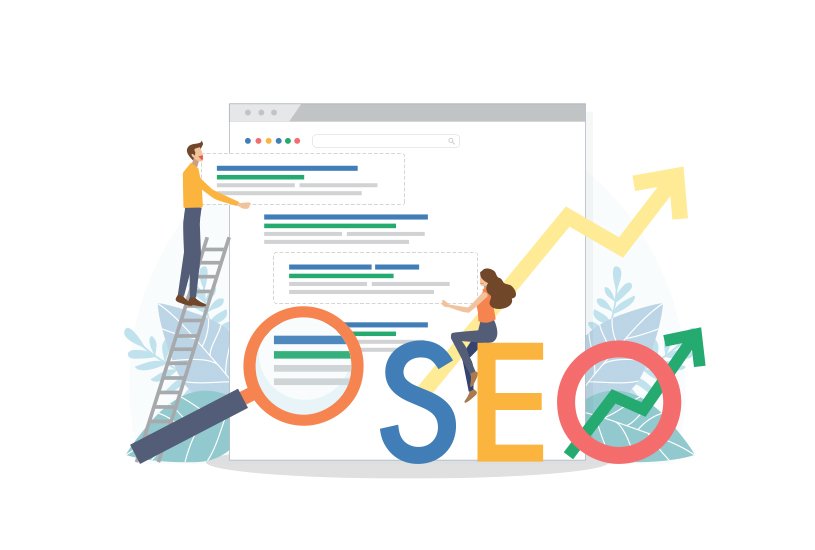Backlinking has consistently been one of the determining factors for website ranking. This has deliberately increased the value of understanding and analyzing different types of links and creating the perfect Content Marketing Strategy. As backlinking is intricately connected with website ranking stats, there can be no shortcut around it.
Different links have different potential for your website. Some will benefit the website and contribute to its growth and popularity, while others might be harmful, affecting your website ranking. This clarifies that different links are to be checked and ineffective ones abandoned to lay off the risk of any potential harm.
 For proper guidance in crafting the backlinks, you need the Best SEO Services in India. By availing of such services, you get to know how to make better judgements of useful and ineffective links and what effects they reflect on your website. SEO optimization is to increase the website ranking, and if backlinking gets jeopardized, it can cause severe damage.
For proper guidance in crafting the backlinks, you need the Best SEO Services in India. By availing of such services, you get to know how to make better judgements of useful and ineffective links and what effects they reflect on your website. SEO optimization is to increase the website ranking, and if backlinking gets jeopardized, it can cause severe damage.
Quality Links & Toxic Links
Quality links have no miracles in the store except trusted sources. However, content-heavy platforms can generate organic, quality links. The Best Digital Marketing Company in Delhi will emphasize organic link generation.
On the other hand, some websites are often desperate to use links that can manipulate the rankings. Any such link with the ability to tamper with the ranking automatically violates the Webmaster Guidelines. Therefore, toxic links are incorporated during SEO optimization instead of placing them at the editorial table.
How Do Toxic Links Affect A Website?
Toxic links are just for linking out websites that may not even be relevant. Sometimes they are hidden in footers or forced within the blog's comment section, or have repetition on every page. These red signals are promptly taken into account by the search engines. The Best SEO Services in India will know how to not mess with the search engine algorithm of the times.
 This was not the case a few years back when manipulative links were commonly used for influencing the ranking standard, and those were not termed as toxic in any shape or form. However, Google and other leading search engine platforms have extensively revised their search algorithm, cracking down on webspam. This was done by shifting the focus of SEO ranking from quantity or quality.
This was not the case a few years back when manipulative links were commonly used for influencing the ranking standard, and those were not termed as toxic in any shape or form. However, Google and other leading search engine platforms have extensively revised their search algorithm, cracking down on webspam. This was done by shifting the focus of SEO ranking from quantity or quality.
- During search engine reviews, the website domain gets scoured by the webspam team, and if they find excessive spam and an unnatural link, they will surely apply for manual action. Manual action has not been a headache for websites; however, it can be triggered by a report from competitors, having a reputation for using toxic links, or other reasons that have triggered the process. With a proper Content Marketing Strategy, toxic links should not be a requirement.
- Toxic links can severely affect your algorithmic filters. Unfortunately, no obvious sign or notification will let you know of the negative impact. However, you will subtly notice that the organic traffic of your platform is steadily declining for no reason.
- Recently, search engines have figured out a way to ignore toxic or unnatural links, allowing no ranking points for such attempts. However, under this model, these links do not cause any additional harm to the website; in fact, they do not have any contribution to make once they are considered unnatural.
Removing Disavows And Toxic Links
Now that you are aware of how toxic links can backfire and cause damage to your website, it is time to learn how to get rid of them for good. The Best Digital Marketing Company in Delhi will start by making a whitelist and placing all the domains that have received red flags in one way or the other. This is specifically important when you have received a manual action.
- After jotting down all the links, you can move them to the ‘remove list’ or the ‘delete’ tab if they can locate an email address associated with the links.
- They will have to send a removal request using any templates and hitting ‘send.’
- You will need to check regularly if the request has been approved.
If this doesn’t solve the problem, algorithmic filters or routine link analysis will require you to reject these links.
- The disavow tool is a delicate one used for filling a request with Google or other search engine platforms, asking them to ignore the toxic links and not be taken into account while ranking the website.
- All links should be included among the disavow list when you finally take up accountability.
- After uploading the files, you will have to wait for 6-weeks to get an official reply from Google.
Conclusion
Usually, toxic links are majorly utilized by websites that do not have quality content at their disposal. It is essentially practised to improve ranking through an alternative route. To counter this situation, you will require a solid Content Marketing Strategy, and your SEO team will guide you with the rest.
















